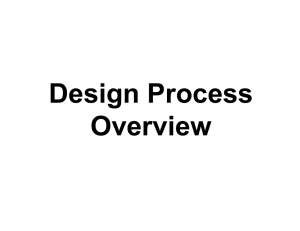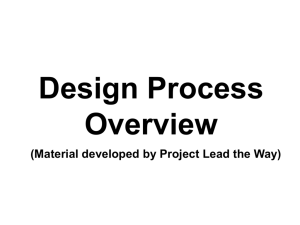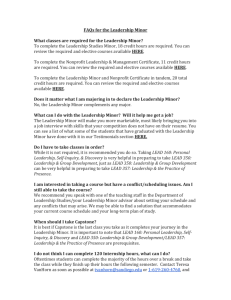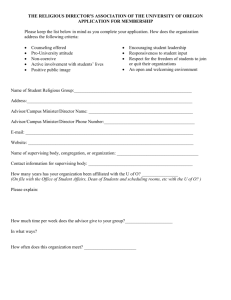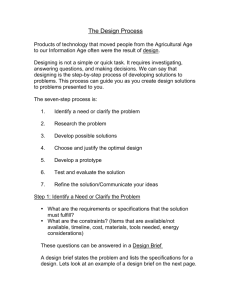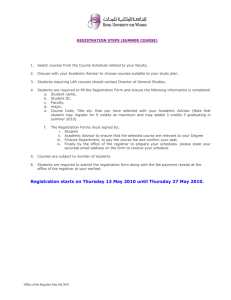2014-DesignSteps
advertisement
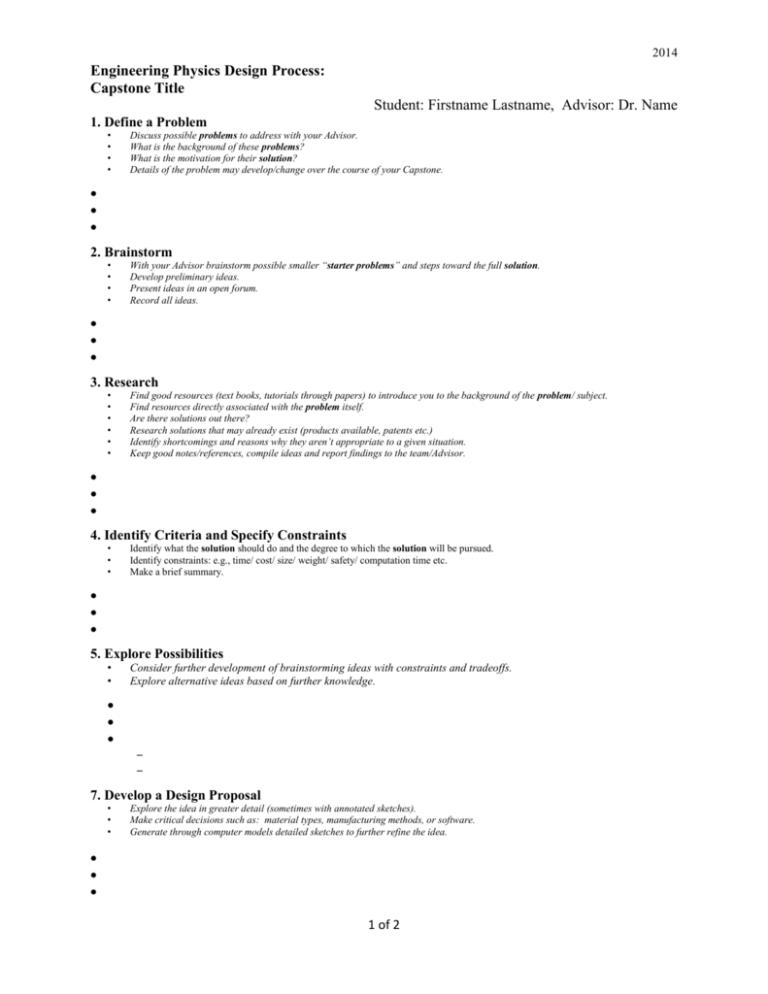
2014 Engineering Physics Design Process: Capstone Title Student: Firstname Lastname, Advisor: Dr. Name 1. Define a Problem • • • • Discuss possible problems to address with your Advisor. What is the background of these problems? What is the motivation for their solution? Details of the problem may develop/change over the course of your Capstone. 2. Brainstorm • • • • With your Advisor brainstorm possible smaller “starter problems” and steps toward the full solution. Develop preliminary ideas. Present ideas in an open forum. Record all ideas. 3. Research • • • • • • Find good resources (text books, tutorials through papers) to introduce you to the background of the problem/ subject. Find resources directly associated with the problem itself. Are there solutions out there? Research solutions that may already exist (products available, patents etc.) Identify shortcomings and reasons why they aren’t appropriate to a given situation. Keep good notes/references, compile ideas and report findings to the team/Advisor. 4. Identify Criteria and Specify Constraints • • • Identify what the solution should do and the degree to which the solution will be pursued. Identify constraints: e.g., time/ cost/ size/ weight/ safety/ computation time etc. Make a brief summary. 5. Explore Possibilities • • Consider further development of brainstorming ideas with constraints and tradeoffs. Explore alternative ideas based on further knowledge. 7. Develop a Design Proposal • • • Explore the idea in greater detail (sometimes with annotated sketches). Make critical decisions such as: material types, manufacturing methods, or software. Generate through computer models detailed sketches to further refine the idea. 1 of 2 2014 Engineering Physics Design Process: Capstone Title Student: Firstname Lastname, Advisor: Dr. Name 8. Make a Model or Prototype • • Make models to help communicate the idea, and study aspects such as shape, form, fit, or texture. Construct a prototype from the working drawings, so the solution can be tested. 9. Test/Evaluate Design • • • Design experiments and test the prototype in controlled and working environments. Gather performance data; analyze and check results against established criteria. Conduct a formal critique to flesh out areas of concerns, identify shortcomings, and establish any need for redesign work. 10. Refine the Design • • • • Make design changes; modify or rebuild the prototype. Make refinements until accuracy and repeatability of the prototype’s performance results are consistent. Update documentation to reflect changes. Receive user’s critique to provide outside perspective to help determine if established criteria have been met. 11. Create or Make Solution • • Determine custom/mass production. Consider packaging. 12. Communicate Processes and Results • • Communicate the final solution through media such as PowerPoint, poster session, technical report. What remaining work needs to be done. - 2 of 2

